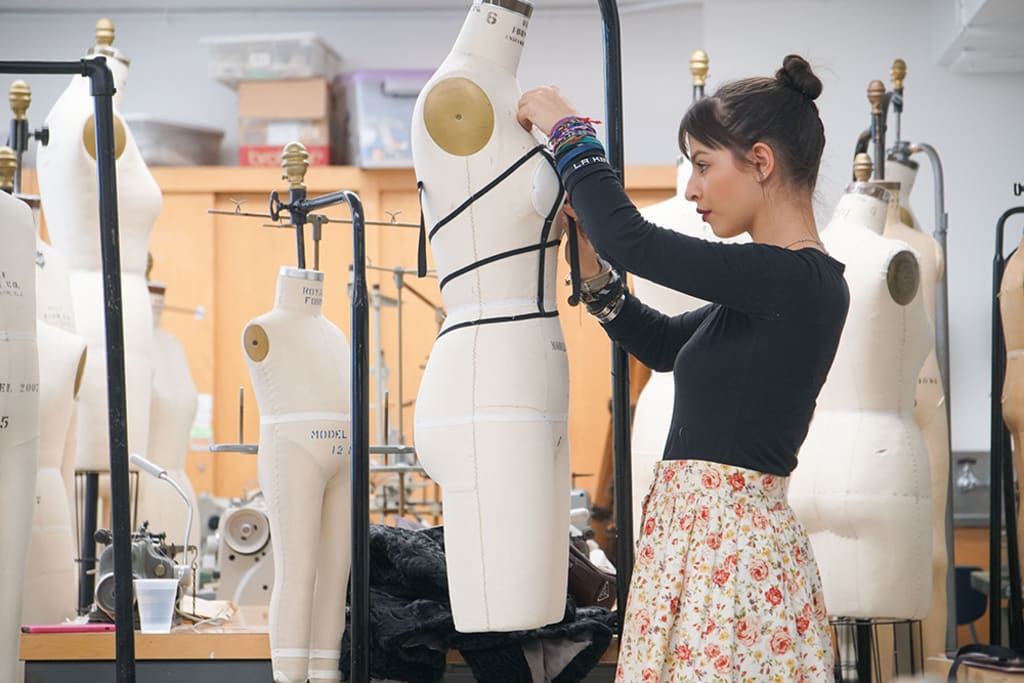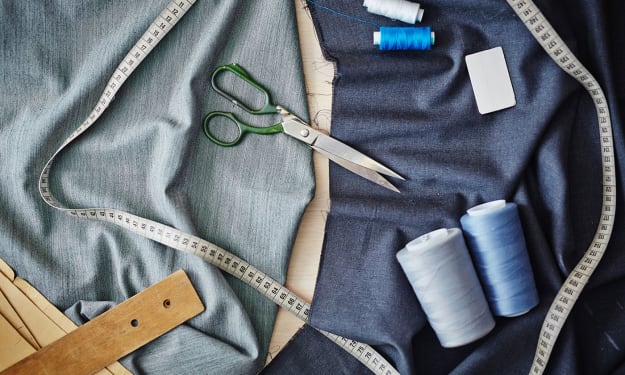Common Fashion Designing Challenges for Students
Fashion Design Challenges for Students

Embarking on a journey in fashion design can be an exhilarating experience for students passionate about creativity and style. However, the path to fashion designer success is not easy.
In this article, we will explore some of the common challenges fashion design students often encounter. We will also provide valuable insights into how to overcome them.
Developing Technical Skills:
One of the initial challenges for students is mastering fashion design technical skills. This includes learning about garment construction, pattern making, draping, sewing techniques, and understanding fabric properties. To overcome this challenge, students must actively participate in practical workshops, engage in hands-on projects, and seek guidance from experienced faculty members. Practice, patience, and a willingness to learn from mistakes are key to honing technical skills in fashion design.
Time Management:
Fashion design programs often involve multiple projects, assignments, and deadlines. Managing time efficiently becomes crucial for students to balance their coursework, practical work, and personal commitments. To overcome this challenge, students can create a schedule or use time management tools to prioritize tasks. They can break them down into manageable steps, and allocate sufficient time for each. Effective time management helps students stay organized, reduce stress, and meet deadlines successfully.
Creative Block:
Students pursuing fashion design may experience creative blocks, where they struggle to generate original ideas or face inspiration shortages. Overcoming creative blocks requires students to explore different sources of inspiration, such as fashion magazines, art exhibitions, nature, or cultural references. Engaging in brainstorming sessions, collaborating with peers, and experimenting with different design techniques can help overcome creative blocks and spark fresh ideas.
Handling Constructive Criticism:
Fashion design requires receiving and accepting constructive criticism for growth and improvement. Students may find it challenging to handle feedback on their work. It is critical to remember that constructive criticism is an opportunity to learn and refine their skills. Students should develop a receptive attitude, be open to feedback from instructors and peers, and view it as a chance to enhance their designs and techniques.
Balancing Creativity and Practicality:
Fashion design requires a balance between creative expression and practicality. Students often face the challenge of creating designs that are visually appealing, functional and marketable. To overcome this challenge, students should focus on understanding the needs and preferences of their target audience. They should also conduct market research, and incorporate practical elements into their designs without compromising their artistic vision.
Building a Strong Portfolio:
Students need a well-crafted portfolio to showcase their skills, creativity, and unique design aesthetic. However, compiling a strong portfolio can be a challenge for students just starting their fashion design journey. To overcome this, students should document and showcase their finest work, including sketches, illustrations, technical drawings, and photographs of completed garments. Seeking feedback from instructors and industry professionals can help refine the portfolio and make it more impactful.
Networking and Industry Exposure:
Establishing connections within the fashion industry is vital for students aspiring to launch successful careers. However, networking and industry exposure can be daunting for students. Attending fashion events, industry seminars, and workshops can provide opportunities to meet industry professionals, share insights, and build connections. Joining fashion clubs or organizations, participating in design competitions, and seeking internships are also valuable avenues for networking and industry experience.
Developing Business and Marketing Skills:
Fashion design involves artistic talent, business acumen and marketing skills. Many designers face challenges effectively promoting their work, reaching their target audience, and managing financial aspects. To address this, designers can consider acquiring basic business and marketing knowledge through courses, workshops, or collaborating with professionals in the field. Understanding pricing strategies, implementing effective marketing strategies, and building a strong online presence are vital for business growth and success.
At Indian Institute of Fashion & Design (IIFD), they understand the challenges students face on their fashion design journey. IIFD offer comprehensive fashion designing courses provide the guidance, mentorship, and practical training needed to overcome these challenges and excel in the industry. Join the leading fashion design college in Chandigarh, India to unleash your creative potential, develop your technical skills, and become a successful fashion designer.
About the Creator
Shaina Trivedi
I am a fashion and textile designer as well as a teacher. My blogs will help you to know more about fashion designing and textile designing courses and topics. Must read my blogs they will definitely help you to be succeed in your future.






Comments
There are no comments for this story
Be the first to respond and start the conversation.